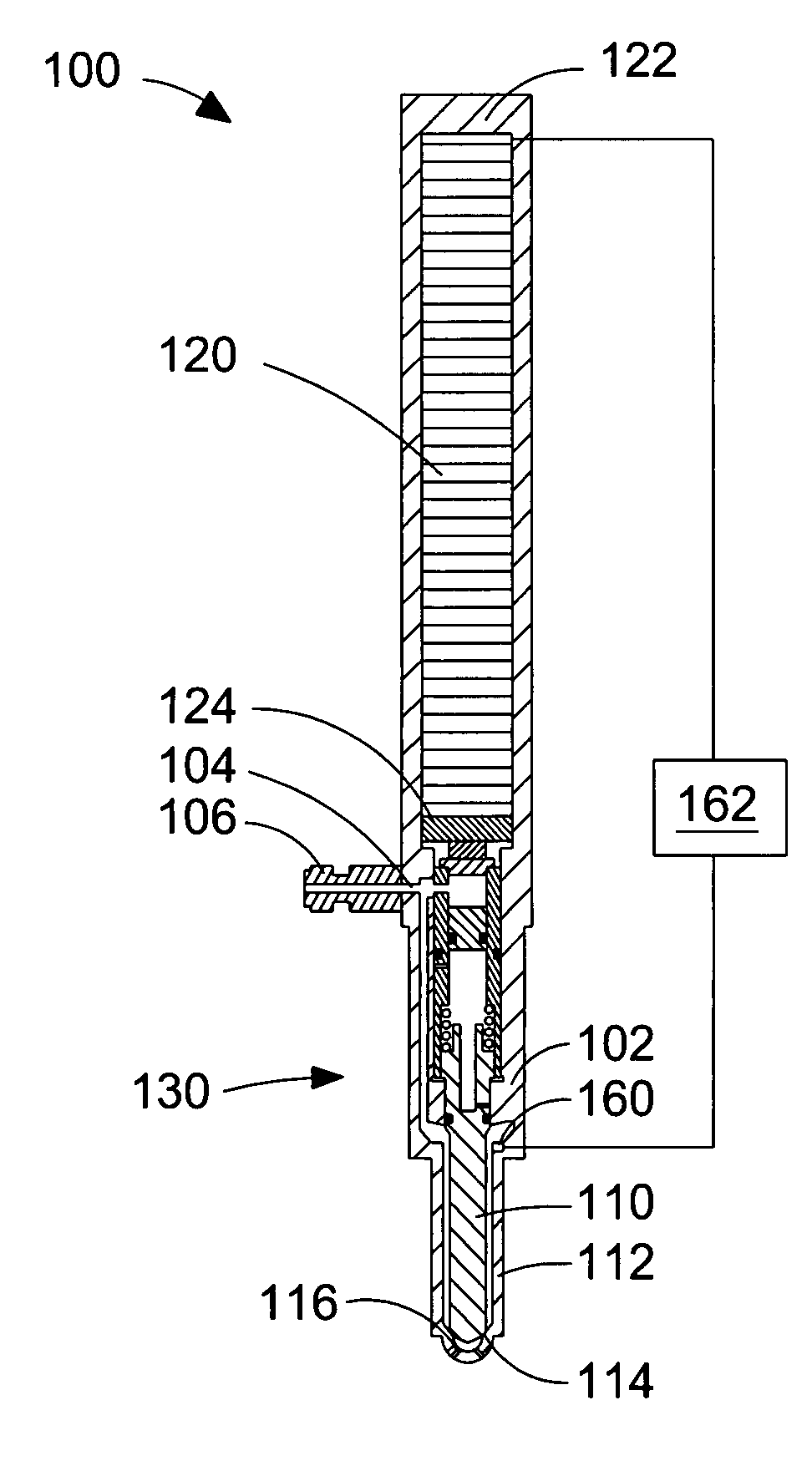Common rail directly actuated fuel injection valve with a pressurized hydraulic transmission device and a method of operating same
a technology of hydraulic transmission device and common rail, which is applied in the direction of valve operating means/release devices, electric control, machines/engines, etc., can solve the problems of increased likelihood of hydraulic displacement amplifier cavitation, inability to control the operation of the control valve, and increased likelihood of hydraulic displacement amplifier leakage into or out, so as to reduce the cost of directly actuating fuel injection valves, improve manufacturability, and add cost and complexity to the apparatus
- Summary
- Abstract
- Description
- Claims
- Application Information
AI Technical Summary
Benefits of technology
Problems solved by technology
Method used
Image
Examples
Embodiment Construction
)
[0076]FIG. 1 and the enlarged view of FIG. 2 are schematic cross-sectional views of a preferred embodiment of a common rail directly actuated fuel injection valve. Fuel injection valve 100 is described in detail hereinafter with reference to FIGS. 1 and 2.
[0077]Valve body 102 can be formed by joining a plurality of pieces to facilitate the manufacturability of valve 100. Valve body 102 comprises a fuel inlet 104 through which fuel can be introduced into valve body 102. Coupling 106 is connectable to a fuel supply system (not shown) and provides an opening and a conduit through which fuel can be directed to fuel inlet 104.
[0078]As better shown in the enlarged view of FIG. 2, fuel cavity 108 is defined by valve body 102 and is in fluid communication with fuel inlet 104. In this embodiment, fuel cavity 108 comprises fuel passages through valve body 102 through which fuel can flow from fuel inlet 104 to an annular space around valve needle 110 provided within nozzle 112. Valve needle 1...
PUM
 Login to View More
Login to View More Abstract
Description
Claims
Application Information
 Login to View More
Login to View More - R&D
- Intellectual Property
- Life Sciences
- Materials
- Tech Scout
- Unparalleled Data Quality
- Higher Quality Content
- 60% Fewer Hallucinations
Browse by: Latest US Patents, China's latest patents, Technical Efficacy Thesaurus, Application Domain, Technology Topic, Popular Technical Reports.
© 2025 PatSnap. All rights reserved.Legal|Privacy policy|Modern Slavery Act Transparency Statement|Sitemap|About US| Contact US: help@patsnap.com



